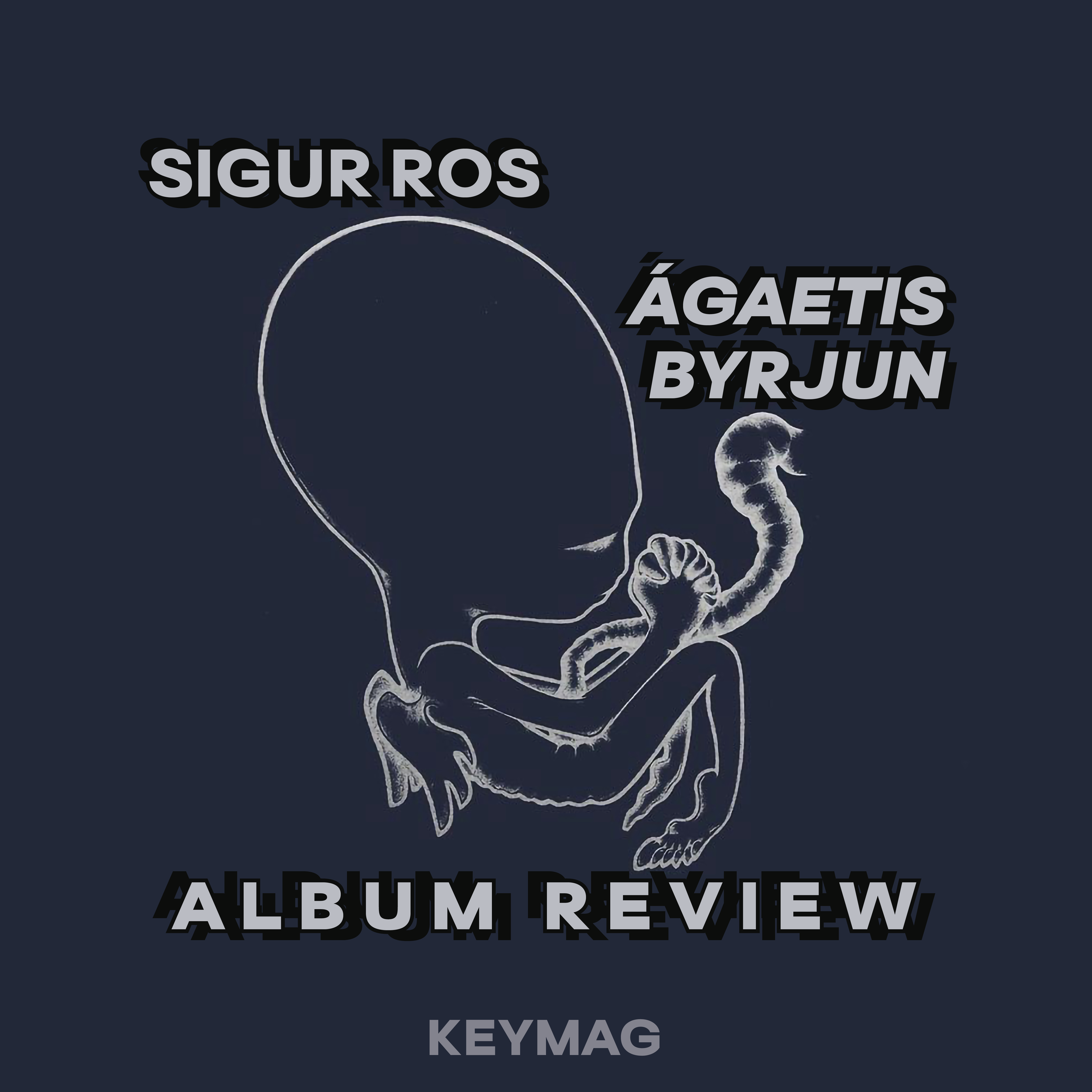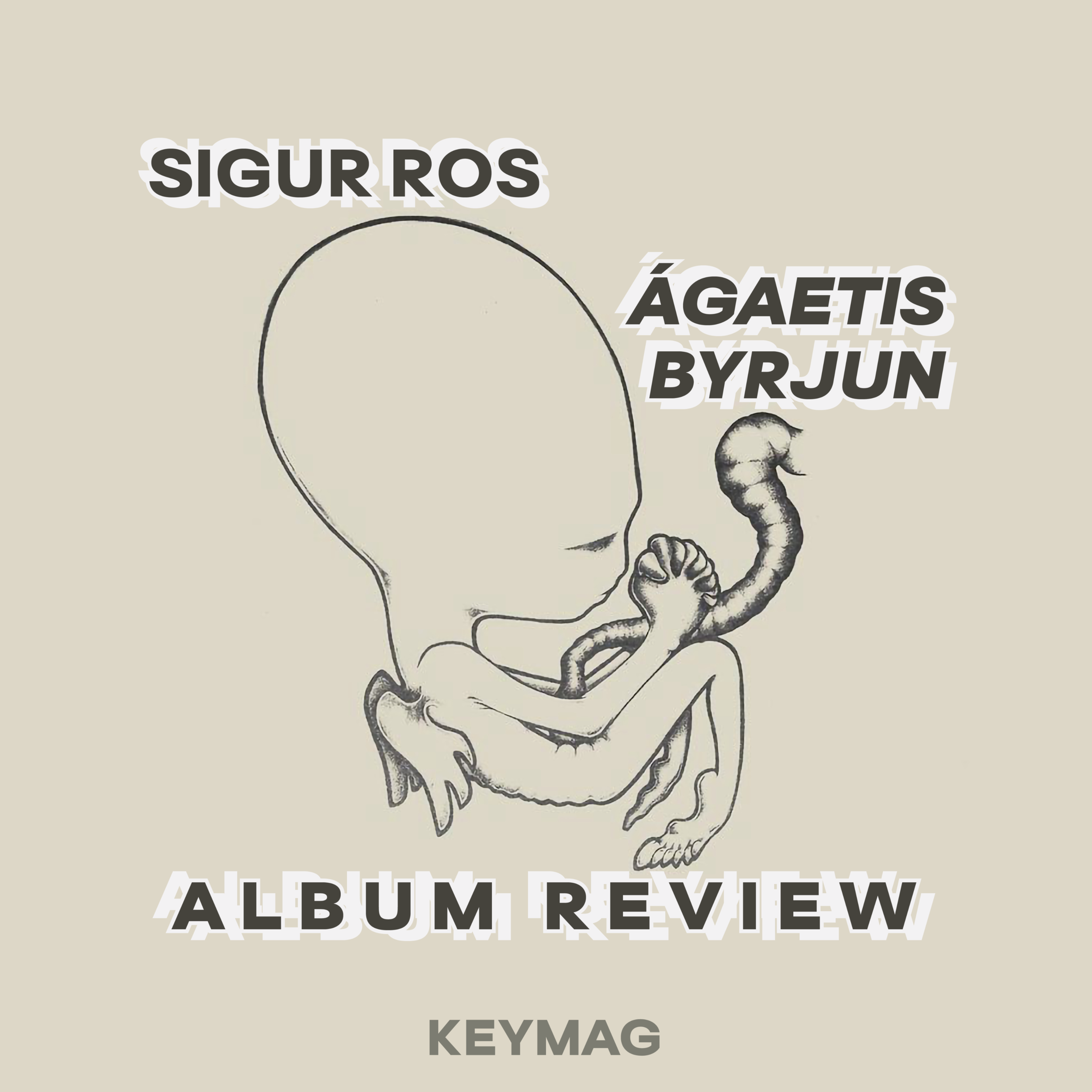Sigur Rós - Ágætis byrjun
Additional editing by Dylan Walsh
The world is fascinated by Iceland. Its startling geology attracts millions the world over every year, and many are wowed by the still-active traditions and tales that have come from a civilisation spending millennia isolated from the rest of the world. Elves and volcanoes, sea monsters and mega-canals - there’s intangible magic hidden in the landmarks that dot its map and the culture that permeates its people. The oneness of this land has made it very fertile for creatives, several of whom go on to conquer the world and further define what makes their point of origin so significant. Few individual pieces of work have done this more successfully than Ágætis byrjun.
Sigur Rós present themselves as something of an oddity enclaved in the world of post-rock - a style of music fixated around the exploration of texture and timbre, and using slow drones and ambience to create movements that seem larger than life - thanks in part to the unique instrumentation that is brought into their musical glass dome. These sounds help to evoke the picturesque sonic landscapes reminiscent of their home country, a subtle use of psychogeography that brings its audience into a setting so familiar to them, they could give you a guided tour. One can feel the punch of the Floydian organ keys on a cut like “Hjartað hamast (bamm bamm bamm)”, or the roar of their signature cello bow that first turns up on a nurtured 10-minute venture - “Svefn-g-Englar”. Here, they take an excursion through one of the most common and vital processes in nature, but from a refreshing angle.
Looming over the four liquid organ chords, a single tone drips on every beat, rippling on the surface as we are introduced to the first setting that takes place in Sigur Rós’ newly-bred world. Clouded in reverb, the whole thing moves at a glacial, lumbering pace, waiting in anticipation for the goliath bowed guitar to erupt. But when it does, the thunderous noise generated doesn’t terrorise the listener. Instead, it provokes a sense of something monumental being added to the world, a new dawn.
Focus then turns to the vocals, another rarity for post-rock. Boyish and placating, frontman Jónsi’s crooning is engulfed in the mix, as though what the band have created is larger than them, enough to swallow them whole. Entwining with the soundtrack, he sings about the journey of childbirth from the perspective of the newborn. His soft falsetto - a constant throughout the LP - breathes warmth into the frosty atmosphere as he repeats a phonic used by Icelanders to comfort infants (“Tjú!”). Simple yet bold descriptions are used to paint a graphic outline image, similar to the pen-drawn cover art: “I float in liquid hibernation”. Throughout Ágætis byrjun, the band show how they can disperse an ocean of feeling with a small drop of detail.
Several other folkloric stories are glazed in a dark overtone, such as a first-hand tale of a person building a ship and struggling to stay afloat as they catch flies down a river, (“Flugufrelsarinn”), or the accounts of someone being beaten into submission by an unnamed regime (“Ný batterí”). This record has a dark side, and though the lyrics are in the native tongue, one does not need to be fluent to sense the change in mood through the gloomy, drawn-out chords that underpin the theatrics.
Despite breaking the traditions of post-rock by using unfamiliar sounds and vocals in a typically-instrumental genre, Sigur Rós do still use some of the commandments that defines this brand of rock music. First and foremost, these songs often take the scenic route to reach their endpoint rather than striving for compactness, which allows the audience enough time to bask in the aural geology the band construct. Moreover, the vocals serve a compositional purpose as well as a storytelling medium, they can be left alone to become a part of the instrumentation as though it were a guitar lead in an “Explosions in the Sky” record. “Olsen Olsen” is indicative of this; a song that sees Jónsi using a self-made language known as “Vonlenska” (or “Hopelandic”). Beside him is a rootsy guitar line, one of the most overt references to mainline rock on the project, and backing him is a regal choral section, congregating what feels like a royal celebration. It’s a beautiful moment of glossolalia that calls back to Elizabeth Fraser’s or Clare Tory’s heavenly gibberish, and would be employed more earnestly on the group’s incredibly minimal following album, ().
The track dispels into the cold Iceland wind, leaving a sole flute that once intersected the main tune, but this time, it finds itself drifting away to feed into the succeeding song. Some of the most curious aspects of this album are these transitionary interludes that purposely take the audience outside of the crafted biosphere, due to how strongly they oppose the majesty of the central environment. Songs are conjoined by strange electronic squinching that is buried and muffled to the point of instilling a musical xenophobia, the fear of the unknown. It’s like finding and peeking under the rotting belly of the album, yet seeing the process of metamorphosis in action, right from the ugly beginnings, highlights how Sigur Rós rise above the many post-rock bands that create the type of formless scapes that doomed the genre to eternal stagnation.
Jónsi and co. seemed to be aware of this stagnation coming into what is their second effort. Craving a fresh starting point, they attempt to atone for their debut, Von, with the titling of Ágætis byrjun: Icelandic for “a good beginning”. The title track lends further detail into the events that conceived this body of work, with an autobiographical depiction of the wider and insular reaction to Von. Growing disheartened at the 300 copies sold in their home territory (“it seems like no-one's listening”), they agreed to “do better next time”, and a distant dream was born. By the time the quartet was ready to unveil their new creation, their ambitions had upgraded substantially, in a now-infamous website excerpt that read:
“We are simply gonna change music forever, and the way people think about music. And don’t think we can’t do it, we will.”
Such an assured level of confidence had never been so justified before, equalising the time Kanye West boldly exclaimed, “this right here, history in the making” on his first single. Sigur Rós emerged out like Archimedes, with Ágætis byrjun providing their eureka moment, and in truth, it was, as they show in their work how they explored the polars of the human existence. Even on less integral releases like the Ný batteri single, where they follow their version of a historical Icelandic lullaby with a cover of the theme used for death announcements on national radio. Though the band can wrestle with the idea of existentialism (“Hjartað hamast (bamm bamm bamm)”), they can just as easily make something as impassioned as “Viðrar vel til loftárása”.
Translated as “it’s good weather for airstrikes”, and named after a famous quote from a news reporter during the NATO bombing of Yugoslavia, the band give themselves another 10 minutes to evolve from a timid cell into a crushing titan. After washing away any leftover sediment from the previous track, a disarming piano melody ushers the listener in from the chilling ambience. Slide guitars and deep digitised bass roll in, as the lyrics find Jónsi consoling his lover in a very intimate way. It mirrors the controversial yet telling music video that involves a kiss between two boys in the middle of a football game, before being dragged away by the fathers. Jónsi himself is gay, and the video attacked the backwards attitude towards sexuality that purveyed in Iceland, earning the band an Icelandic Music Award for “Best Video” in 2001. His quiet falsetto is swarmed by gorgeous string sections that have become par for the course by this point in the LP, swelling and stirring with heightening drama. Opening into heart-wrenching climax, the song breaks all tension with an outburst of bowed guitar that slows down time. A set of frantic violins just about squeeze into earshot amongst the quake, gradually becoming more tangled in each other, toppling over the rhythm, bringing the whole song crashing down. In a record already gushing with large peaks and troughs, this song feels like it captures a wide panorama of emotion.
Since this album left the shelves in place of future releases, the minds behind it have collectively become one of the most recognisable names to come from Iceland, the only other being Björk. But while her music reaches far geographically, borrowing ideas from UK dance and equatorial tribe music to truly embody the parochial term “world music”, Sigur Rós are distinctly Icelandic. There’s an unapologetic patriotism that filters through the strange tales and scenic world-building - with every song, celebrating their homeland and its culture. “Starálfur” is a fairytale based around a boy who goes to sleep, sees an elf behind his eyelids and waking up no longer in his home; all written with an illuminatory piano line that Coldplay would later replicate one too many times. Sufjan Stevens also springs to mind as a rush of trumpets and violas wash over each other before a bridge that sounds like a Shakespearian tragedy. Jónsi’s understated conviction is almost mournful at times, yet hints at the traditional beliefs that are behind the story. “Huldufólk” are mythical elves that live in a parallel world (known as “Álagablettur”, a place that few locals claimed to have experienced) and have the ability to appear visible at will. It is unknown if Jónsi, or indeed others from the band believe in this folk tale, but “Starálfur” clearly nods to a phenomenon that, let’s face it, could only come from either Iceland or the Church of Scientology.
However, small nuggets such as these make the case as to why Ágætis byrjun feels so synergised. Consistent throughout is a tone of celebration, be it towards their nation, youth, love and emotions. The fact that it can consolidate what seems like the complete spectrum of the human condition into a mere hour and 12 minutes that breezes past, it can only be the work of mythology.


